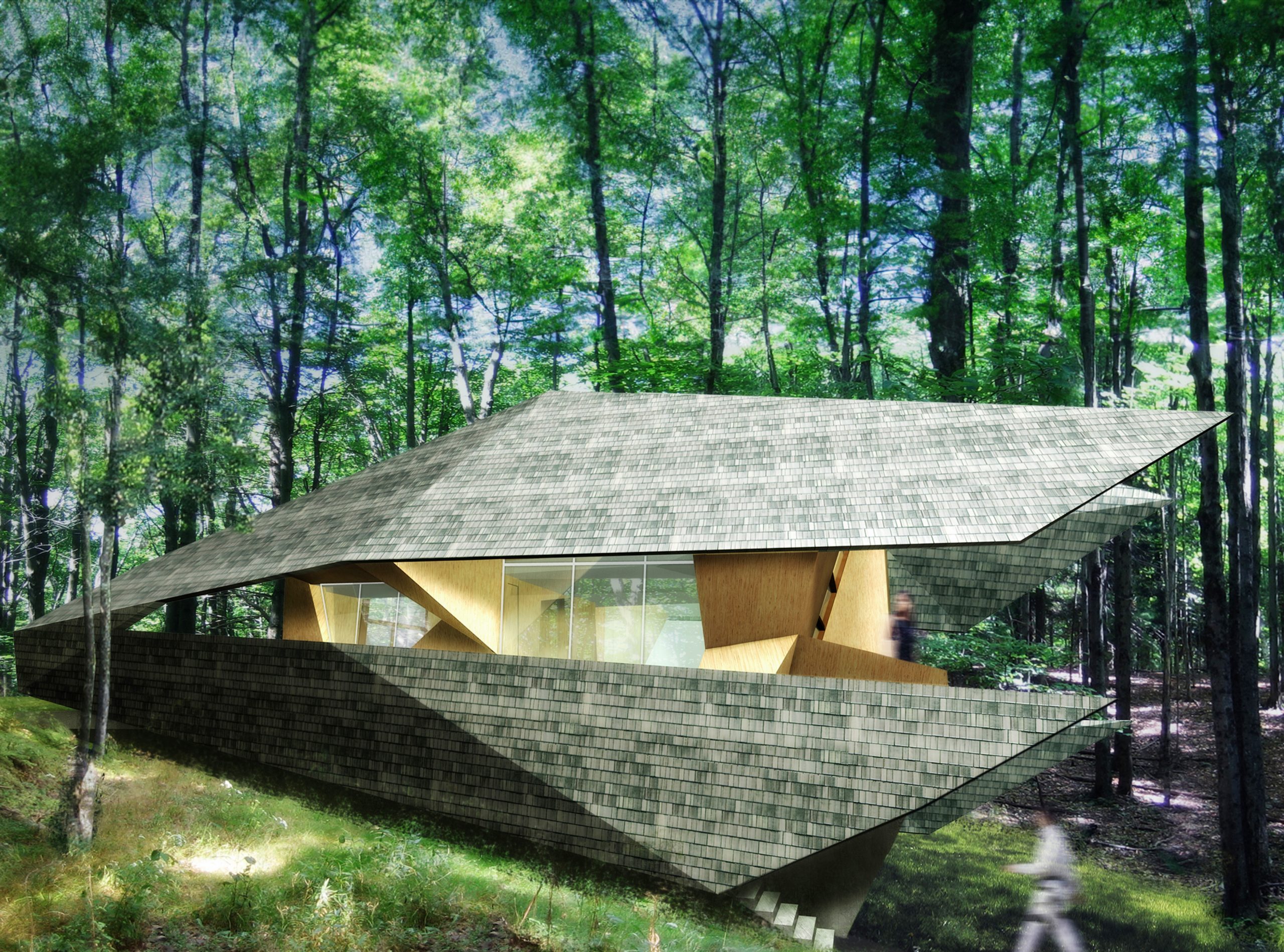




Seed House
Location: Upstate New York, NY
Project Designer: APS Designs
Project Type: Residential Design
Awards
This Seed House project, was awarded with the 2007 American Architecture Award from the Chicago Museum of Architecture.
Architectural Excellence: The Seed House
The Seed House isn’t just a structure; it’s a work of art that breathes, evolves, and engages with its surroundings. The Seed House isn’t just a dwelling; it’s a symphony of architecture and nature that resonates with creativity and life.
A Vision Blossoms
Conceived in 2007, the Seed House emerged as a concept that marries design and nature in upstate New York’s serene woods. Commissioned by an art collector from NYC, this 1400 square foot country home is more than just a structure; it’s an embodiment of artistry and harmony.
Nature’s Inspiration
The Seed House takes its form from the very essence of nature—the seedpod. Just as a seedpod opens to nurture new life, this house integrates seamlessly with its surroundings. It’s a testament to the idea that architecture and nature can exist in perfect harmony.
A Vivid Transformation
Step into the world of the Seed House, where its outer shell unfurls to reveal a vibrant inner core. This core is more than just a living space; it’s a hub of creativity and life. Designed with meticulous attention to detail, the house breathes life into its environment and offers a haven of inspiration.
Crafted to Endure
Crafted with care, the Seed House’s structure is built to stand the test of time. A wooden frame, covered with marine plywood, forms its foundation. The outer skin, adorned with natural cedar shingles, ensures that the house blends seamlessly with the countryside, becoming a part of the landscape it calls home.
Nature’s Invitation
The Seed House isn’t content to exist in isolation—it invites nature in. Slits on the roof and along its sides create an impression of a burst shell, a gesture that beckons life into its inner sanctums. These slits establish a dialogue with the natural landscape, bridging the gap between architecture and the world beyond.

